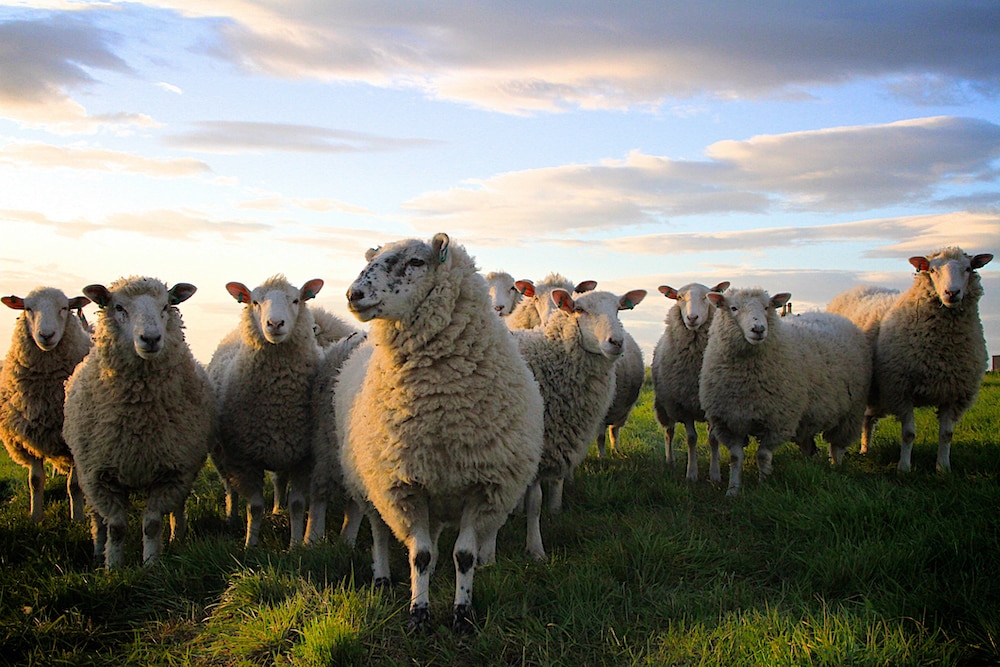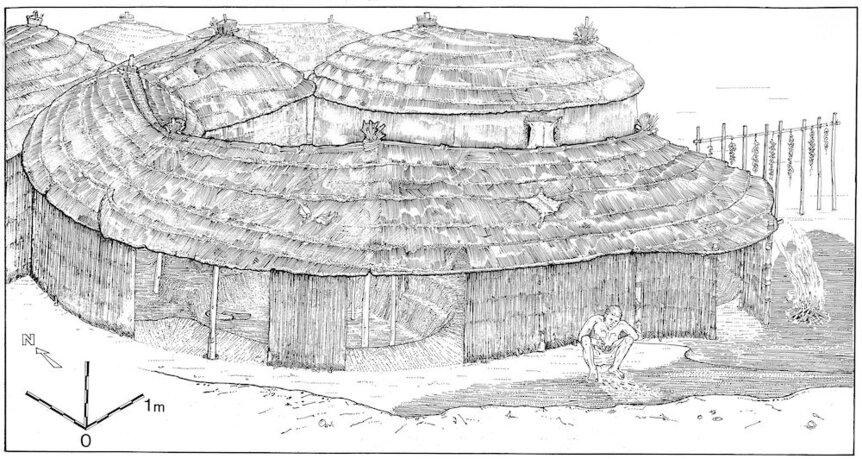Create a free profile to get unlimited access to exclusive videos, sweepstakes, and more!
Burned dung suggests we may have been herding animals earlier than thought, predating agriculture
"Dung is a very useful fuel."

Babe would have never had the chance to herd sheep or go to the city if not for the invention of farming. For better or worse, throwing a noose around nature through agriculture and domestication has allowed us to produce resources reliably year-round. Tracing the line backward through time, we must reach a point where some enterprising people realized they could plant their own crops and manage their own herds, releasing them from the obligation to constantly hunt and gather.
Current estimates for the domestication of livestock and the development of agriculture sit somewhere between 9,000 and 11,000 years ago. A new study, based on samples gathered at Abu Hureyra in Syria, suggest people might have been tending animals much earlier than we thought and may even have predated agriculture. The findings were published in the journal PLOS One.
If we journey back to southwest Asia 13,000 years ago, we’ll find a collection of highly mobile people, usually small groups, who travel together following resources. They spend their days hunting game and gathering plants. When the pickings get thin and the game moves on, so do the people. There’s little consideration for the future when so much energy must be expended on surviving today. This is the way hunter-gatherers lived.
“Hunter-gatherers tend to live in small groups and tend to be highly mobile. They track resources. When they set up a camp, they tend to build circular or semi-oval structures. They’ll live there and they move as needed,” Alexia Smith, lead author of the study, told SYFY WIRE.
Then we invented agriculture and domestication and have been living the easy life ever since. That’s the popular story anyway: that there was a sort of paradigm shift which changed the way humans lived, allowing them to settle in the same place for long stretches, or permanently. The reality, it seems, is that this transition was much slower and more complex than we might have realized.
It’s believed that the site at Abu Hureyra might have been especially resource rich, allowing hunter-gatherers to establish more permanent living arrangements. It might have even supported them year-round, freeing up time for experimentation. And we see those innovations in at least two places. The first is in the design of their homes.
“Across southwest Asia we see a transition from round structures to rectilinear structures with straight lines. That type of architecture is typically associated with a greater level of sedentism and staying in one place,” Smith said.
The second clue was in tiny crystals found in and around fire pits from Abu Hureyra. To get her hands on those, Smith had to travel to the University College London. That’s because Abu Hureyra was excavated in the ‘70s. There, scientists collected burned plant remains which were collected, studied, and stored. Now, the University College London is one of the only places you can study Abu Hureyra, as it’s presently located at the bottom of Lake Assad, a reservoir formed by the Tabqa Dam.
“When you recover plant remains, they are typically burned. They’re little balls of charcoal and you can look at the shape and identify them. I had been interested in looking at the little bits of dust that come with those samples. I realized you can find dung spherulites in that dust,” Smith said.
Dung spherulites are tiny crystalline structures which form in the digestive systems of animals and are passed into the feces. Finding dung spherulites on their own might not have been that important, as it would only suggest the presence of animals, but the spherulites had more secrets to reveal.
Sometime between 12,300 and 12,800 years ago the spherulites start showing evidence that they’ve been heated to between 500 and 700 Celsius. That’s a good indication they’ve been burned, and that suggests something pretty interesting.
“Dung is a very useful fuel. Today, throughout the world it is widely used for cooking and heating. The question is when did that begin,” Smith said.
Coupled with the change in architecture happening at the same time, the presence of dung spherulites in the fire pits suggests the intentional use of dung as fuel source. And there’s only a couple of ways you can get enough dung to burn. It’s possible that people were gathering dung from the environment and bringing it back for the express purpose of burning it. They probably were doing some of that, but the research suggests this might mark the beginnings of animal management. As dung started to pile up around them, they might have burned some just to get rid of it and realized it made for pretty good fuel.
“It could be that there was early sheep rearing at this time. Between the differences in the animal bones present and the change in architecture, it points toward animal tending,” Smith said.
Of course, that would have looked very different to the way we manage animal populations today. “Animal tending can mean many things. It can mean bringing a live animal to a site, keeping it for a couple of days, and then killing and eating it. Or it can mean something much more intensive,” Smith said.
Smith suggests there was probably a mixture of strategies at work as people experimented with novel ways to interact with plants and animals. It probably started slow, with no way of knowing how it would reshape the world.
“This sets up a number of social changes. People can start to accumulate more stuff because they don’t have to carry it around everywhere. When you have more stuff, you can begin to have social inequities. It really is a revolutionary shift in terms of how people interact with one another and the natural world,” Smith said.



























